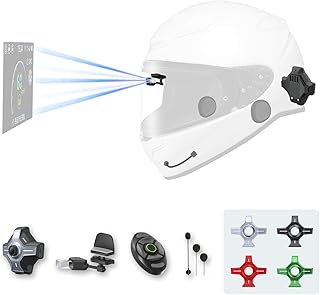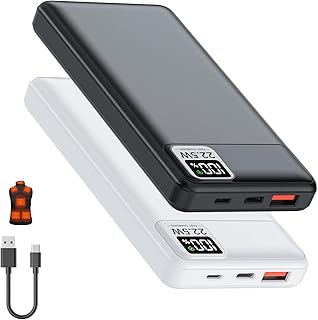Summary of "Japan's Secret HUD Motorcycle Helmet - Shoei Opticson Review"
[Shoei Opticson](https://www.amazon.com/dp/B0037NUC2S?tag=dtdgstoreid08-20) [Motorcycle Helmet](https://www.amazon.com/dp/B00HLUWN34?tag=dtdgstoreid08-20) with Head-Up Display (HUD)
Main Features
- Integrated HUD: Projects a holographic display about 10 meters ahead, visible to the rider’s right eye via an adjustable combiner lens.
- Brightness Sensor: Automatically adjusts HUD brightness, capable of outshining direct sunlight.
- Ventilation: Features a chin bar vent, though ventilation is described as poor (“about as well as a piece of Tupperware”).
- Weight: Lightweight design aiming to keep gross weight under 1800 grams to meet ECE standards.
- External Battery: Requires an external battery pack (carried in the rider’s pocket) to power the HUD for about six hours.
- Safety Focus: Designed to integrate with upcoming radar safety features from major Japanese motorcycle manufacturers, aiming to provide real-time alerts (e.g., collision warnings, blind spot alerts).
- Design Challenges: Complex integration of HUD components with helmet ventilation, padding, speakers, and controls to maintain comfort and safety.
Pros
- Innovative and pioneering approach to motorcycle HUDs.
- Lightweight for a helmet with integrated tech.
- Bright, clear display visible even in direct sunlight.
- Potential to enhance rider safety by providing critical information instantly.
- Shoei’s reputation as a premium helmet manufacturer lends credibility.
Cons
- Extremely limited availability: only sold in Japan, through Shoei’s Tokyo flagship gallery, with strict purchase criteria.
- Poor ventilation compared to typical helmets.
- HUD image stability issues: display blurs and jitters with head movement and higher speeds due to helmet motion relative to the rider’s skull.
- Requires carrying an external battery pack, which is inconvenient.
- Current iteration feels like an early experiment rather than a polished product.
- No significant advantage over existing TFT dashboards or smartphone navigation for basic info.
- High price (~137,500 yen / roughly $1,000+).
- Not recommended for general consumers or casual riders.
User Experience
- The HUD display can be disorienting due to helmet movement during riding, especially when shoulder checking.
- The helmet’s ventilation is inadequate, potentially uncomfortable for long rides.
- The external battery pack is awkward and detracts from the helmet’s convenience.
- The helmet is more of a beta test or proof of concept than a finished product.
- The reviewer had difficulty acquiring the helmet due to its exclusivity and strict sales policies.
Comparisons & Context
- Compared to car HUDs, which are fixed and stable, the helmet HUD suffers from motion-induced blur.
- TFT dashboards and smartphone apps already provide many functions that riders want, making HUDs less immediately necessary.
- BMW is developing connected ride sunglasses with better HUD tech, using waveguide lenses that offer higher brightness and stability without bulky batteries.
- The helmet is positioned as a “big fat hint” at future HUD tech rather than a final solution.
- Shoei has filed multiple U.S. patents, indicating ongoing development.
Verdict / Overall Recommendation
The [Shoei Opticson](https://www.amazon.com/dp/B0037NUC2S?tag=dtdgstoreid08-20) helmet is an intriguing and innovative first step into motorcycle HUD technology, showcasing Shoei’s engineering prowess and hinting at the future of rider safety and information display. However, due to its limited availability, high price, poor ventilation, display instability, and the inconvenience of an external battery, it is not recommended for most riders at this time. It serves better as a collector’s item or a beta test platform than a practical helmet for everyday use.
Additional Notes from Multiple Perspectives
- The reviewer emphasizes the helmet’s rarity and exclusivity, requiring travel to Japan and special permissions to purchase.
- The HUD tech is seen as a necessary evolution to complement upcoming radar safety systems.
- The helmet’s current flaws highlight the challenges of integrating advanced tech into motorcycle helmets.
- Future HUDs will likely be more refined, smaller, and more efficient, possibly integrated into sunglasses rather than helmets.
- The video was sponsored by Insta360 Go 3, a tiny camera used to film interior shots of the helmet.
Summary
The [Shoei Opticson](https://www.amazon.com/dp/B0037NUC2S?tag=dtdgstoreid08-20) is a pioneering but flawed HUD [motorcycle helmet](https://www.amazon.com/dp/B00HLUWN34?tag=dtdgstoreid08-20), available only in Japan, offering a glimpse into future safety tech but not yet practical or recommended for general use.
Category
Product Review
Share this summary
Featured Products




